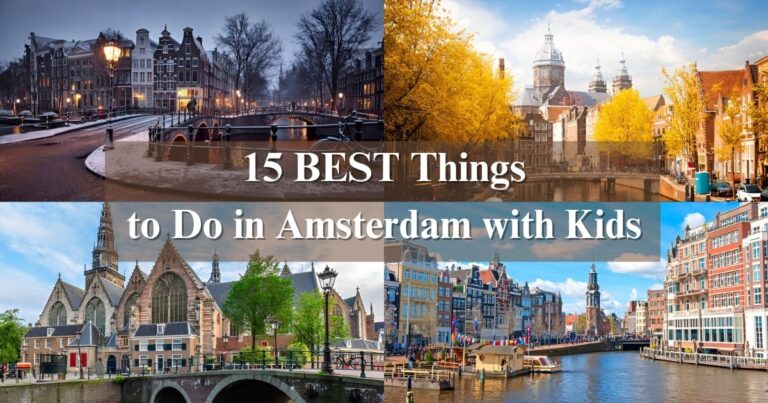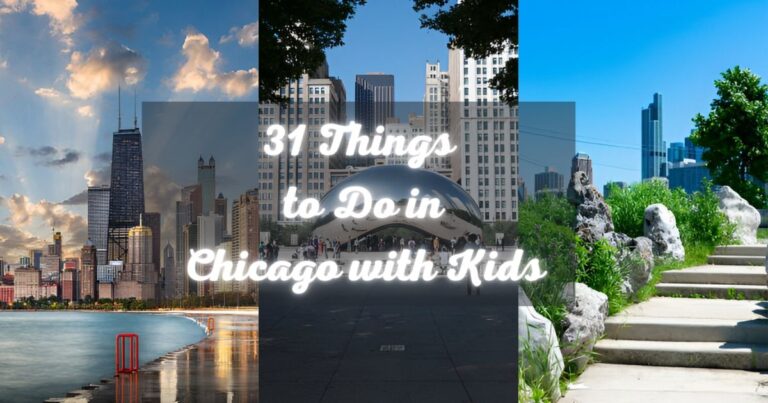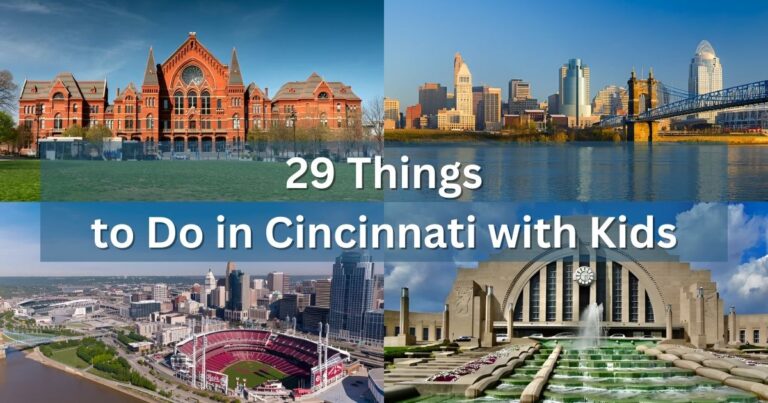5 Days in Netherlands Itinerary: A Perfect Exploration Guide for First-time Visitors
Introduction: Exploring the Netherlands in 5 Days
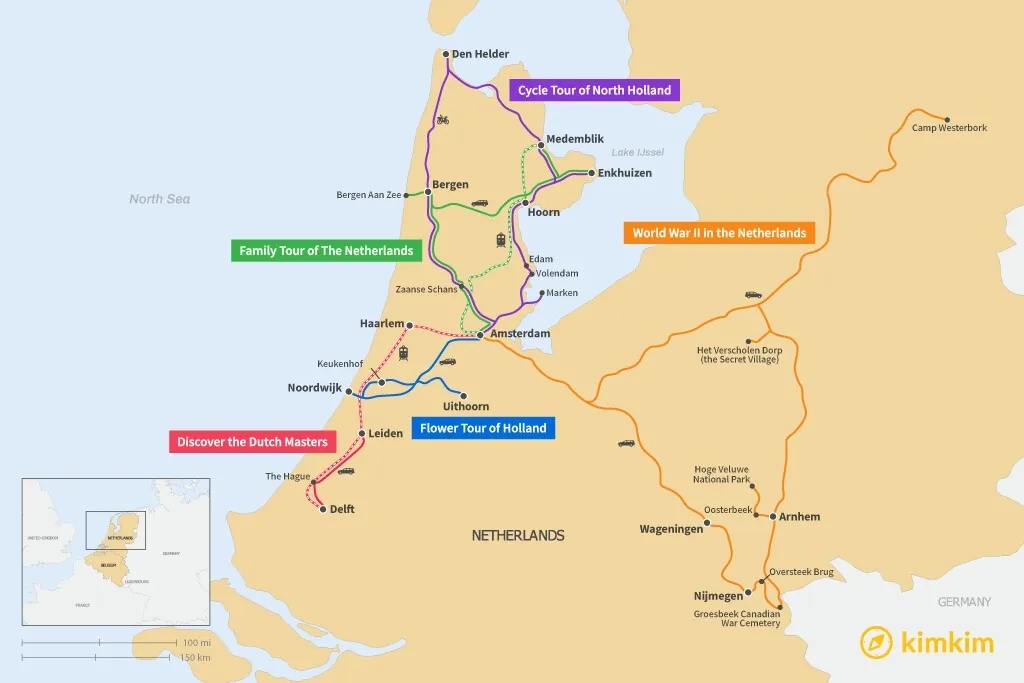
The Netherlands—a country synonymous with windmills, tulips, canals, and rich artistic heritage—is a compact yet culturally overflowing destination. Despite its small size, the Netherlands is home to a wide spectrum of experiences, from the lively city streets of Amsterdam to the charming countryside and beyond. Whether you’re gazing at iconic Dutch masterpieces in the Rijksmuseum or gliding down the tranquil canals of Giethoorn, this itinerary will highlight the quintessence of the Dutch experience.
In just five days, travelers can immerse themselves in the unique blend of tradition and modernity that defines the country—exploring bustling urban centers, storybook towns, and breathtaking natural landscapes. This itinerary covers everything: architecture, art, history, and nature. Ready to embark on a journey through some of the Netherlands’ most fascinating locales? Let’s dive in!
Day 1: Amsterdam – The Heart of Dutch Culture
Amsterdam, the capital and cultural hub of the Netherlands, makes the perfect starting point for your five-day journey. A beautiful mix of historic buildings, canals, majestic artwork, and a cutting-edge urban atmosphere, the city offers something for everyone. Let’s explore Amsterdam in a day.
Morning: Discovering Amsterdam’s Iconic Landmarks
Start your trip at Dam Square, one of the busiest and most significant parts of the city. Here, you’ll find the Royal Palace, still in use by the Dutch Royal family for official events, and the National Monument, a tribute to those who died in World War II. The square is not just a historical venue; it also offers cafes and local stores for an easy-going start to your day.
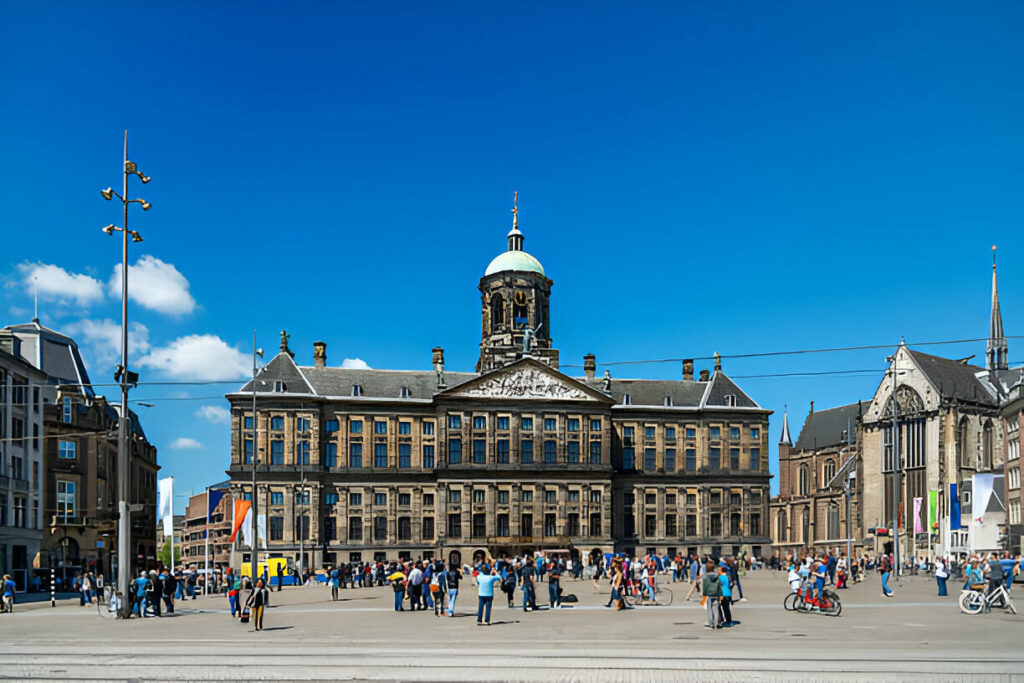
Once you’ve soaked in the energy of Dam Square, it’s time to immerse yourself in some UNESCO heritage. The Amsterdam Canal Ring, dating back to the 17th century, is a marvel of city planning. The best way to explore these waterways is through a Canal Cruise. The views from the boat offer a unique perspective of the city, gliding past centuries-old merchants’ houses, bridges, and houseboats. Canal cruises generally last about an hour, but they’re time well spent, giving travelers an ideal snapshot of Amsterdam in motion.
Afternoon: Art and History in Amsterdam’s Museums
After cruising the canals, walk over to the Rijksmuseum, one of the world’s most celebrated art museums. Here, you’ll find some of the most iconic works of the Dutch Golden Age, notably Rembrandt’s “The Night Watch” and Vermeer’s “The Milkmaid”. The museum represents over 800 years of Dutch history, from medieval times to modern art. Admission costs €22.50 for adults, and it’s a popular destination, so booking tickets in advance is recommended.
If you’re passionate about art, a visit to the nearby Van Gogh Museum is a must. Housing the largest collection of Van Gogh’s works in the world, this museum allows you to trace the evolution of one of history’s most influential painters. Admission tickets are around €20, and seeing masterpieces like “Sunflowers” and “The Starry Night” will undoubtedly be a trip highlight.
For a somber but essential experience, end your museum tour with a visit to the Anne Frank House. Located at the Prinsengracht canal, this museum tells the poignant story of Anne Frank and her family, who hid in a secret annex during WWII. Due to its deep historical significance, tickets for the Anne Frank House need to be purchased ahead of time, as they sell out quickly.
Evening: Strolling through Jordaan and Dinner
After a long day filled with art and history, wind down with a stroll through the Jordaan district. Known for its narrow streets, charming canals, and small boutiques, this neighborhood is about as quintessentially Dutch as it gets without being overrun by tourists. Perfect for an evening wander, Jordaan will offer you calm after a busy day of sightseeing.
For a well-deserved dinner, consider one of Jordaan’s delightful eateries. You can head to Café Winkel 43, famous for its incredible Dutch apple pie. Alternatively, choose a traditional meal at a restaurant serving stamppot (mashed potatoes mixed with vegetables), or perhaps indulge in freshly caught herring, a Dutch specialty.
Day 2: Zaanse Schans & Haarlem – Windmills and Dutch Charm
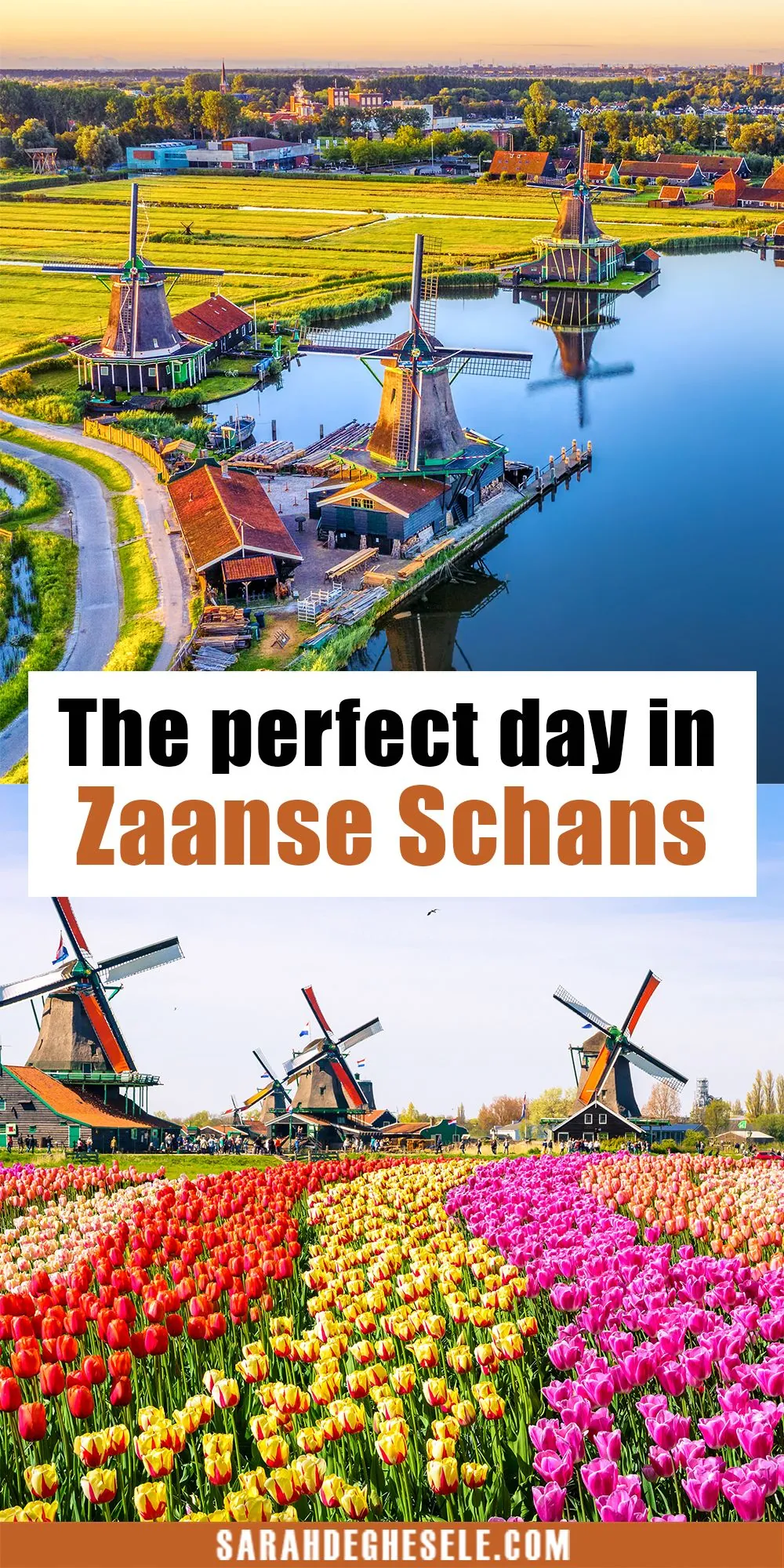
While Amsterdam offers a world of its own, the quaint villages and smaller towns around the city provide a markedly different perspective. Today, enjoy a blend of Dutch history and culture with a visit to the windmills of Zaanse Schans and the charm of Haarlem.
Morning: Zaanse Schans – A Step Back in Time
On the second day, head to Zaanse Schans, just 30 minutes from Amsterdam by train or bus. This open-air museum transports you back to the Netherlands’ past, with meticulously preserved windmills, barns, and houses from the 18th and 19th centuries. Spend your morning exploring windmills like De Kat, a wind-powered paint mill, or De Zoeker, where traditional oil is still produced.
But Zaanse Schans isn’t just about windmills. Here, you can also immerse yourself in Dutch craftsmanship by visiting the wooden clog-making workshops or learning about traditional Dutch cheese at a local farm. The Zaans Museum offers additional insight into the region’s history and industry, complete with a delightful collection of historic artifacts.
Afternoon: Haarlem – A Quaint Dutch Town
Continue your exploration by shifting from Zaanse Schans to Haarlem, a quintessential Dutch town known for its cobblestone streets, Gothic architecture, and lively cultural scene. A short 15-minute train ride from Amsterdam, Haarlem is the ideal afternoon stop.
Start at the Grote Markt, the magnificent main square with medieval buildings and active marketplaces. The historic St. Bavo’s Church, located here, is a must-visit, especially for lovers of architecture and classical music. The church houses the famous organ played by both Mozart and Handel.
For those interested in the arts, drop by the Frans Hals Museum, which showcases works of the 17th-century Dutch master Frans Hals, best known for his innovative portraiture. Another great option is Teylers Museum, the oldest museum in the Netherlands, featuring a beautiful blend of art, fossils, and scientific equipment.
Evening: Dinner in Haarlem or Return to Amsterdam
Cap off your evening with a dinner in Haarlem at one of the many cozy restaurants or cafes nestled around the charming streets. Alternately, you could return to Amsterdam and explore more of its thriving food scene. Whichever you choose, rest well for another day of adventure!
Day 3: Rotterdam & Delft – Modern Architecture Meets Dutch Tradition
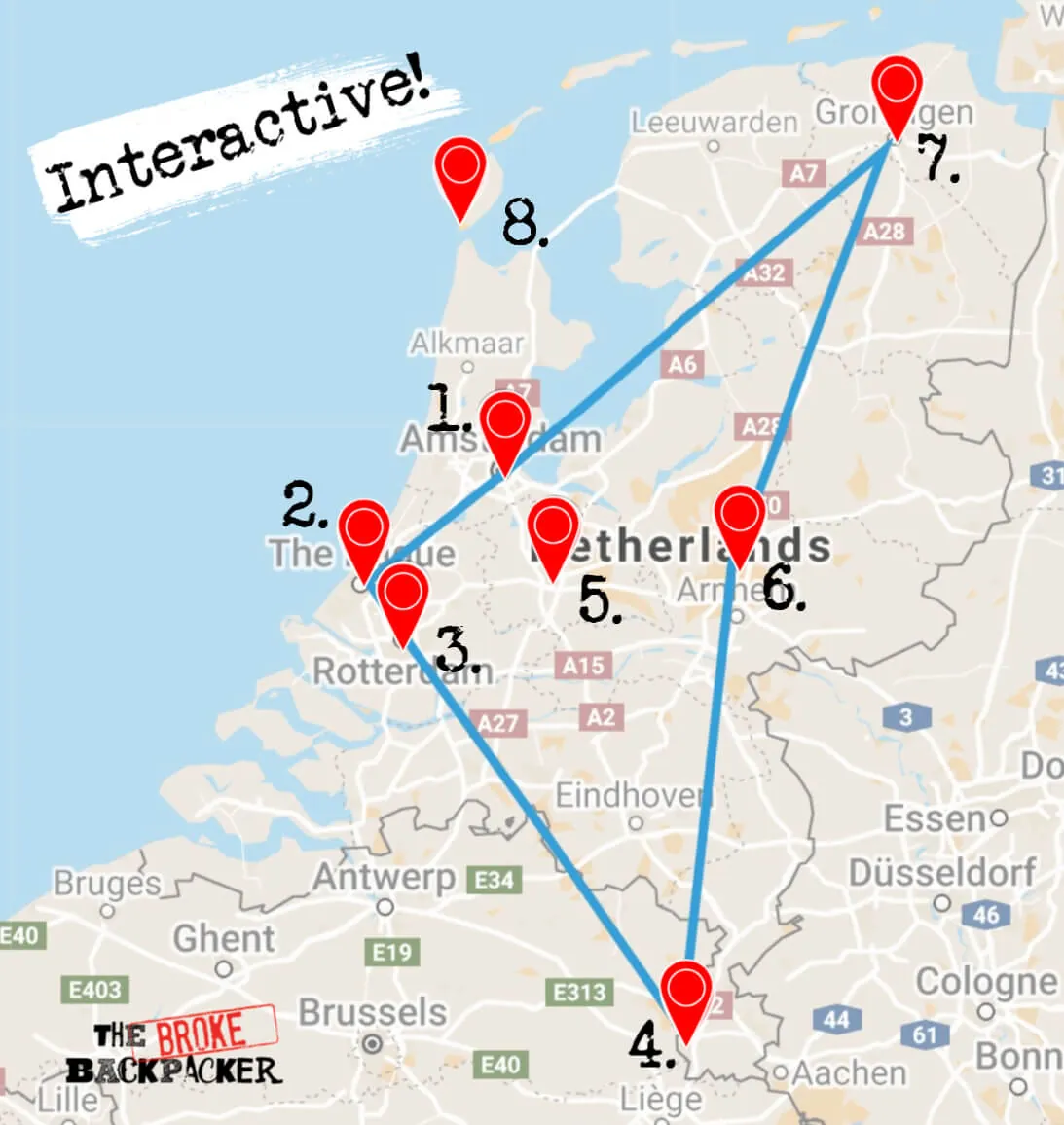
Day three mixes tradition with modernity as you explore two of the Netherlands’ most fascinating cities: Rotterdam and Delft. These destinations are distinct in their appeal—Rotterdam’s cutting-edge architecture paired with Delft’s historical charm ensures a fulfilling day.
Morning: Rotterdam – A Modern Marvel
Rotterdam, the Netherlands’ second-largest city, has fully embraced modernity, especially after much of the city was rebuilt following WWII. Start your day by taking in the Erasmus Bridge, a sleek, modern marvel affectionately known as “The Swan.” This iconic cable-stayed bridge connects the northern and southern parts of the city and provides splendid views of Rotterdam’s skyscrapers and waterfront.
Close by, explore Rotterdam’s quirky Cube Houses, designed by architect Piet Blom. These fascinating, tilted cubic structures are unlike traditional homes, and one has even been turned into a museum for visitors to discover the thought process behind Blom’s creative concept.
When it comes to food, Market Hall is the place to go. Its gigantic arch design is not just striking, the interior houses endless stalls offering delicacies such as stroopwafels, kibbeling (fried fish), artisanal cheeses, and fresh produce. It’s the perfect spot to grab breakfast or lunch.
Afternoon: Delft – History and Pottery
In the afternoon, take the short 20-minute trip to Delft, a town famous for its historic connection to the Dutch royal family and traditional blue-and-white Delftware pottery. Begin your visit with a stroll around Oude Kerk (Old Church) and Nieuwe Kerk (New Church), both of which dominate the skyline. The royal crypt in Nieuwe Kerk houses the tombs of members of the royal family, including the father of the Dutch nation, William of Orange.
For an unparalleled glimpse into Dutch craftsmanship, visit Royal Delft Pottery to see the delicate process of making Delft Blue ceramics. You can even try your hand at painting or leave with a signature vase or plate, a quintessential Dutch souvenir.
Evening: Return to Rotterdam or Stay in Delft
As the day winds down, decide whether to return to Rotterdam or remain in Delft for the evening. Both cities offer plenty of enticing dinner options, Rotterdam with its modern eclectic flair and Delft with its classic Dutch charm. After dinner, rest up as you prepare for tomorrow’s exploration of the Hague and Utrecht.
Day 4: The Hague & Utrecht – Art, Politics, and Medieval Charm
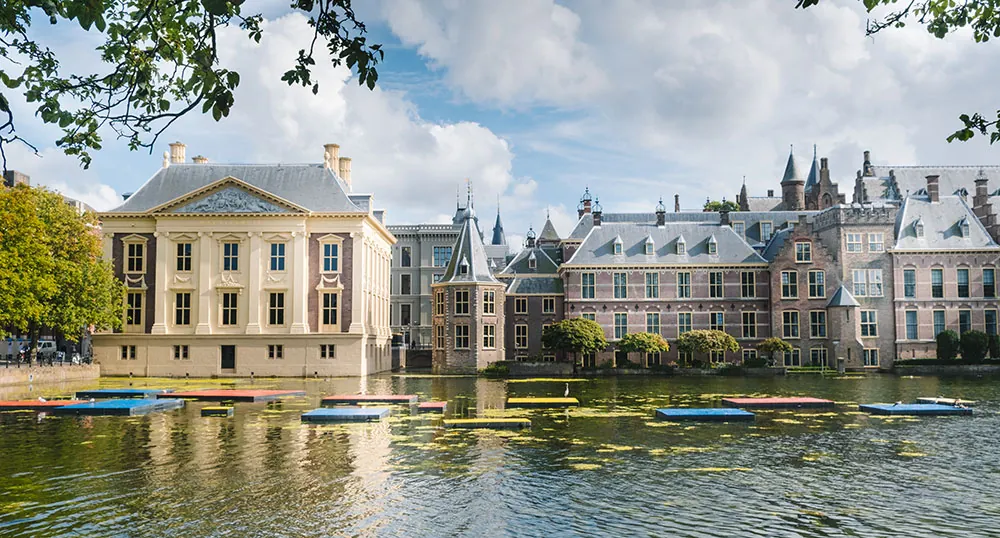
On day four, shift gears with visits to two very different cities: The Hague, the seat of the Dutch government and home to astounding art collections, and Utrecht, where medieval architecture aligns with bustling canals and urban creativity.
Morning: The Hague – Art and Government
Start your day in The Hague (Den Haag), where politics and history blend seamlessly with art and culture. Known for its stately government buildings and international organizations like the International Court of Justice, Binnenhof is perhaps the most recognizable landmark in the city. The buildings surrounding Hofvijver Lake offer a picturesque setting steeped in centuries of history. Consider joining a guided tour, which sheds light on the Dutch parliamentary system and important political events.
Next, art lovers should visit the nearby Mauritshuis Museum, home to some of the finest masterpieces of the Dutch Golden Age. Here, you’ll have the chance to see one of the most iconic paintings in the world—Vermeer’s “Girl with a Pearl Earring”. The museum also boasts works by Rembrandt, Holbein, and more.
Afternoon: Utrecht – Canals and Medieval Architecture
In the afternoon, take a short train ride to Utrecht, one of the Netherlands’ oldest cities known for its medieval architecture and unique wharf cellar houses. Start your exploration at the towering Dom Tower, the tallest church tower in the Netherlands. Climb the 465 steps to the top and you’ll be rewarded with unrivaled views of the city’s historical skyline.
Utrecht’s canal system, with its distinct canalside wharves and hidden cellars, is perfect for a leisurely stroll. Along the way, you’ll see quirky cafes, boutique shops, and artists’ galleries right along the water—a scenic and relaxed experience.
Evening: Dinner by Utrecht’s Canals
As dusk sets in, enjoy dinner at one of Utrecht’s canal-side restaurants. Sample a bowl of erwtensoep (Dutch pea soup) or try the iconic pannenkoeken (Dutch pancakes). Utrecht’s historic atmosphere paired with its lively students and café culture ensures a delightful end to the day.
Day 5: Keukenhof Gardens or Giethoorn – Nature at Its Best
On your final day in the Netherlands, it’s time to step into the great outdoors. Depending on the season, you can either dive into glorious tulip fields at Keukenhof Gardens or enjoy the peaceful canals of Giethoorn, often called the “Venice of the North.”
Spring Option (March-May): Keukenhof Gardens
If traveling from March to May, a day spent at Keukenhof Gardens is non-negotiable. Known as the Garden of Europe and located in Lisse just outside Amsterdam, Keukenhof showcases over seven million tulips in bloom every spring. Walk among meticulously crafted flower displays or rent a bicycle to explore the surrounding tulip fields at your own pace.
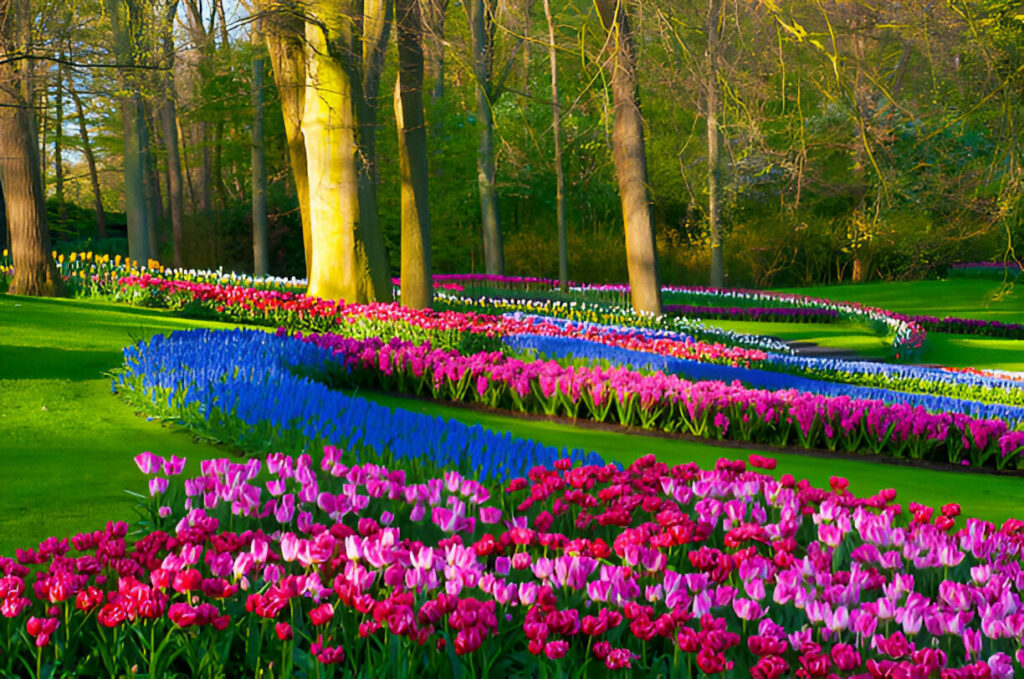
Getting to Keukenhof is relatively simple—there are dedicated buses that run from key train stations like Amsterdam and Schiphol Airport during flower season. Tickets to Keukenhof are €19, and it’s highly recommended to visit early in the day to avoid large crowds.
Off-season Option (June-February): Giethoorn – The Venice of the North
If you’re visiting outside of tulip season, consider a trip to Giethoorn, a picturesque village known for its tranquility and beautiful waterways. Dubbed the Venice of the North, Giethoorn replaces roads with canals, and boats become the primary mode of transportation. Imagine gliding under wooden bridges past cozy thatched cottages—it’s a scene straight out of a fairy tale!
You can rent a whisper boat (an electric boat) or take a guided tour to float through the town. If you’d prefer to stay on land, Giethoorn also offers many cycling paths and walking trails that allow you to take in the serene countryside.
Either destination will wrap up your five days with a rejuvenating retreat into nature before bidding farewell to the Netherlands.
Practical Tips for Traveling in the Netherlands
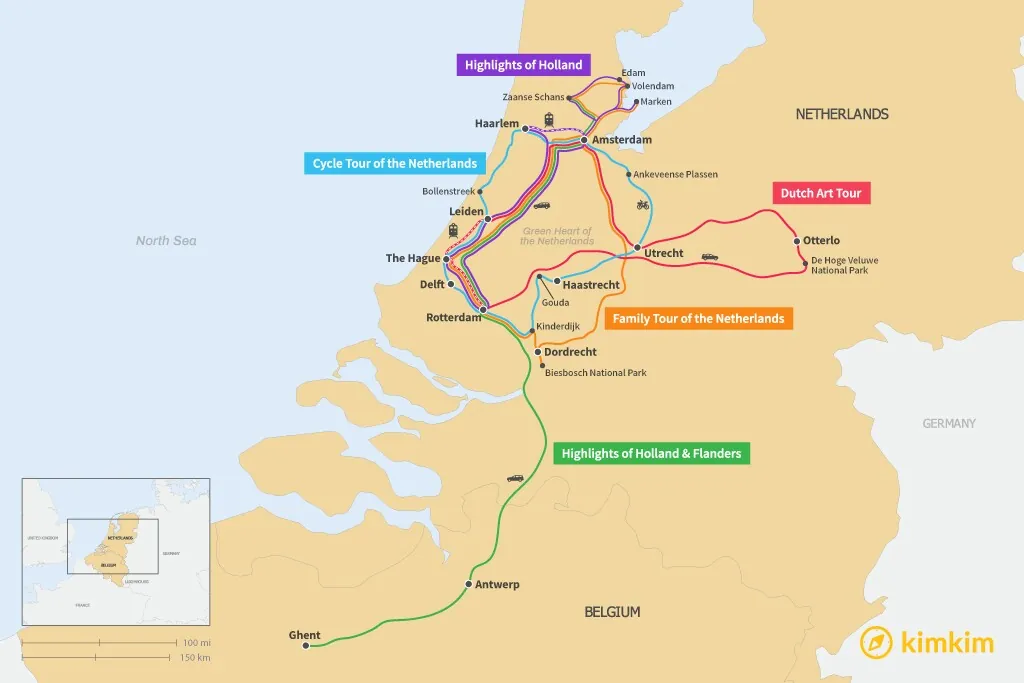
Transportation Options
The Netherlands boasts an incredibly efficient public transport system, particularly its train network. Trains connect almost all major cities including Amsterdam, Rotterdam, The Hague, and Utrecht, and are frequent and affordable. Purchase train tickets from ticket machines, online, or via the NS Dutch train app.
Biking is the quintessential Dutch way to get around cities, and most train stations even rent out bicycles. It’s easy to cover shorter distances and explore local neighborhoods on a bike.
Best Time to Visit
The best time to visit the Netherlands depends on your interests:
- If you want to see the famous tulip blooms, visit from March to May.
- Summer (June to August) is great for exploring the outdoors, cycling, and attending lively Dutch festivals.
- Autumn (September to November) offers cooler weather with fewer tourists, while winter brings festive displays and cozy cafes.
Where to Stay
- Amsterdam: Stay near Museumplein or Jordaan for easy access to major museums, shopping streets, and canal areas.
- Rotterdam: Pick accommodations close to the Erasmus Bridge if you’re after stunning views and modern hotels.
- Haarlem and Delft: Both offer well-priced accommodation near the charming Grote Markt squares, prime locations for exploring the town.
FAQs Section – Common Questions from Travelers About Visiting the Netherlands
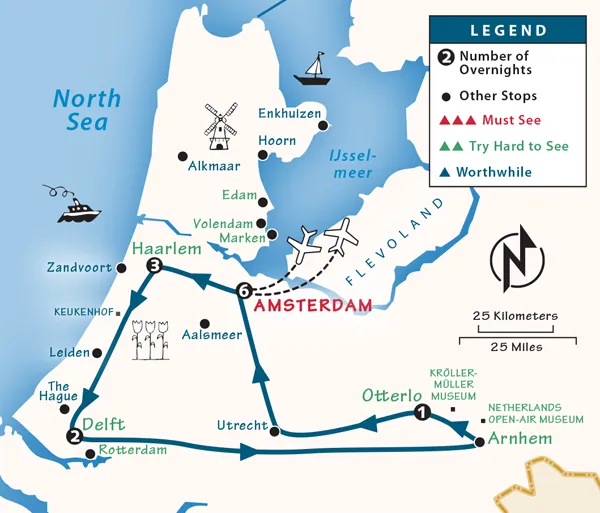
- What is the best time to visit the Netherlands?
- Spring (March-May) is the ideal time for tulips, but summer is also perfect for outdoor activities and festivals.
- How easy is it to get around in the Netherlands?
- Extremely easy! The public transportation system is efficient, with frequent trains and buses. Bikes can be rented for local exploration.
- Is it possible to visit multiple cities in one day?
- Yes, the Netherlands is a small country, and cities like Amsterdam, Rotterdam, and Delft are close enough for day trips.
- What are some must-see attractions outside Amsterdam?
- Must-visits include Zaanse Schans for its stunning windmills, Keukenhof Gardens (in spring) for flowers, and the car-free village of Giethoorn.
- Do I need to book tickets in advance for museums?
- Yes, especially for popular attractions like the Rijksmuseum and Anne Frank House. Online reservations often make visiting much easier.
Conclusion: Making the Most of Your 5 Days in the Netherlands
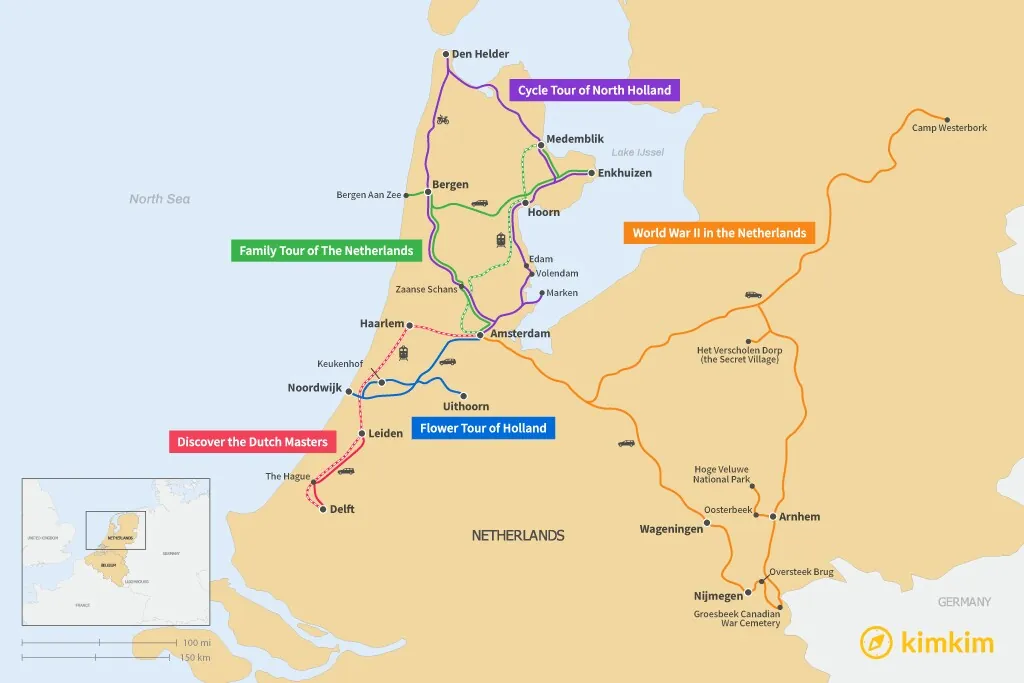
In just five days, the Netherlands offers an unparalleled mix of culture, history, modernity, and nature. From the bustling cosmopolitan airs of Amsterdam and Rotterdam to the tranquil lanes of Haarlem, Delft, and Giethoorn, you’ll have lived through centuries in just a handful of days. This itinerary is designed to hit key highlights, both famous and hidden gems, but feel free to alter the journey based on your preferences—whether leaning into art, history, or natural beauty.
Whether this is your first or fifteenth visit to the Netherlands, five days is just enough time to fall deeply in love with the multifaceted charm of this beautiful country. Happy travels!


